|
News Archive 2009: January |

|
Wall divides east and west sides of cosmic metropolis
A new study unveils the largest region of star formation in the nearby galaxy M33. This composite image from Chandra X-ray Observatory data, combined with optical light data from the Hubble Space Telescope, shows a divided neighborhood where some 200 hot, young, massive stars reside.
 FULL STORY FULL STORY
 |  |

|
 |
Cassini finds hydrocarbon rains may fill Titan lakes
Recent images of Titan from NASA's Cassini spacecraft affirm the presence of lakes of liquid hydrocarbons by capturing changes in the lakes brought on by rainfall.
 FULL STORY FULL STORY
 |  |
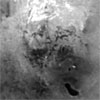
|
 |
Solar physics spacecraft launched by Russia
Russia launched a solar observatory Friday to study the connection between the sun and Earth, marking the first Russian science mission of its scale in more than four years.
 FULL STORY FULL STORY
 |  |
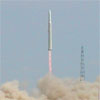
|
 |
Black hole outflows from Centaurus A revealed
Using the Atacama Pathfinder Experiment's submillimeter wavelength capabilities, new insight has been gained into the jets and lobes flowing from Centaurus A's central black hole.
 FULL STORY FULL STORY
 |  |

|
 |
New European TV satellite fails quickly in space
Eutelsat's five-week-old communications satellite has been struck by a "major anomaly" in its power system and is unable to begin operational service, the company says. The W2M spacecraft was launched by an Ariane 5 rocket on Dec. 20.
 FULL STORY FULL STORY
 |  |
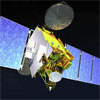
|
 |
Mars rover team diagnosing unexpected behavior
The team operating NASA's Mars Exploration Rover Spirit plans diagnostic tests this week after Spirit did not report some of its weekend activities, including a request to determine its orientation after an incomplete drive.
 FULL STORY FULL STORY
 |  |
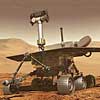
|
 |
Planet with wild temperature swings studied
NASA's Spitzer Space Telescope has observed a planet that heats up to red-hot temperatures in a matter of hours before quickly cooling back down. The "hot-headed" planet is a gas giant that orbits a star 190 light-years from Earth.
 FULL STORY FULL STORY
 |  |
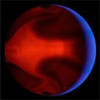
|
 |
A super-Neptune found
Astronomers at the Harvard-Smithsonian Center for Astrophysics have discovered a planet somewhat larger and more massive than Neptune orbiting a star 120 light-years from Earth. The newfound world orbits very close to its star, revolving once every 4.88 days and is baked to a temperature of around 1,100 degrees F.
 FULL STORY FULL STORY
 |  |
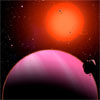
|
 |
OTHER HEADLINES Additional stories today
|
 |
Researchers cooking up new gelled rocket fuels -- Engineers and food scientists are teaming up to develop a new type of gelled fuel the consistency of orange marmalade designed to improve the safety, performance and range of rockets for space and military applications.
|
 |
Supermassive black holes don't stop star formation
A team of Yale University astronomers has discovered that galaxies stop forming stars long before their central supermassive black holes reach their most powerful stage, meaning the black holes can't be responsible for shutting down star formation.
 FULL STORY FULL STORY
 |  |

|
 |
OTHER HEADLINES Additional stories today
|
 |
Station astronauts lose alarming amounts of hipbone strength -- Astronauts spending months in space lose significant bone strength, making them increasingly at risk for fractures later in life, according to a study that evaluated 13 astronauts who spent four to six months on the space station.

Historic KSC building readied for Orion spacecraft work -- After a two-year, top to bottom renovation, the High Bay Facility of the Operations & Checkout (O&C) Building at NASA's Kennedy Space Center is now ready to begin preparations to build the new Orion crew exploration vehicle - the flagship of NASA's Constellation Program.

Lunar lander technology demonstrator engine tested -- Pratt & Whitney Rocketdyne's Common Extensible Cryogenic Engine has successfully demonstrated critical capabilities required for NASA's Altair lunar lander.

ATK and NASA complete major milestones for Constellation -- In the last twelve months, Alliant Techsystems has completed several significant milestones for NASA's Constellation program that will set the stage for major flight and ground tests in 2009.
|
 |
Video galleries show preps for Discovery mission
Recent activities in support of Discovery's upcoming launch, including a practice countdown and emergency training for the astronauts and the installation of the payload into the space shuttle, are presented to Spaceflight Now+Plus watchers in both standard definition and high definition video clips.
 HIGH DEFINITION VIDEO HIGH DEFINITION VIDEO
 STANDARD DEFINITION VIDEO STANDARD DEFINITION VIDEO
 |  |
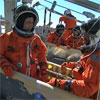
|
 |
Milky Way's black hole twin discovered in nearby galaxy
Exploiting the Very Large Telescope's acute infrared capabilities, astronomers have uncovered intense star-forming regions and a supermassive black hole in nearby galaxy NGC 253.
 FULL STORY FULL STORY
 |  |

|
 |
Five years and counting for the intrepid Mars rovers
Five years ago this weekend, the Opportunity rover made what scientists have dubbed an interplanetary hole-in-one, fortuitously landing in a small Martian crater containing rock-hard evidence that Mars was once a warmer, wetter planet.
 FULL STORY FULL STORY
 ARCHIVE: COVERAGE OF SPIRIT'S LANDING ARCHIVE: COVERAGE OF SPIRIT'S LANDING
 ARCHIVE: COVERAGE OF OPPORTUNITY'S LANDING ARCHIVE: COVERAGE OF OPPORTUNITY'S LANDING
 |  |
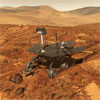
|
 |
Japan launches satellite to track greenhouse gases
The first satellite devoted to measuring greenhouse gases in Earth's atmosphere arrived in space Friday after launching from an island spaceport in southwestern Japan.
 FULL STORY FULL STORY
 |  |
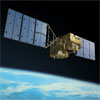
|
 |
One launch pad or two? No decision for Hubble mission
NASA managers met Thursday and agreed to press ahead with plans to launch the shuttle Atlantis as early as May 12 on a final mission to service and upgrade the Hubble Space Telescope. But officials deferred a decision on whether to require use of launch pad 39B for a potential emergency rescue mission and what impact that would have on the Ares 1-X test flight schedule.
 FULL STORY FULL STORY
 STS-125 ATLANTIS MISSION ARCHIVE STS-125 ATLANTIS MISSION ARCHIVE
 ARES 1-X PREVIEW REPORT ARES 1-X PREVIEW REPORT
 STORE: ATLANTIS CREW PATCH STORE: ATLANTIS CREW PATCH
 STORE: ARES 1-X PIN STORE: ARES 1-X PIN
 |  |

|
 |
Most recent shuttle crew presents its mission movie
On cargo-delivery run to the space station in November, shuttle Endeavour brought up critical equipment that remodeled the interior of the international outpost in preparation for doubling the size of its resident crews. The STS-126 astronauts recap their mission in this post-flight video presentation.
 VIDEO REPORT VIDEO REPORT
 STS-126 VIDEO COVERAGE STS-126 VIDEO COVERAGE
 |  |

|
 |
Hubble snaps image of a nebula within a cluster
The Hubble Space Telescope has taken this picture of a unique planetary nebula nested inside an open star cluster. Both the cluster and the nebula reside over 10,000 light-years away, in the southern constellation Pyxis.
 FULL STORY FULL STORY
 |  |

|
 |
Discovery's countdown dress rehearsal wraps up
Despite frigid temperatures that would have scrubbed a real space shuttle launch attempt, Discovery's seven astronauts climbed aboard their spacecraft at pad 39A for a practice countdown Wednesday morning.
 MISSION STATUS CENTER MISSION STATUS CENTER
 STS-119 COVERAGE ARCHIVE STS-119 COVERAGE ARCHIVE
 VIDEO: MISSION VIDEO COVERAGE VIDEO: MISSION VIDEO COVERAGE
 STORE: DISCOVERY CREW PATCH STORE: DISCOVERY CREW PATCH
 |  |

|
 |
NASA identifies ways to pay for Mars Science Lab rover
NASA may cut funding aimed at a Mars Sample Return mission and a probe to the solar system's outer planets to help pay for delays of the agency's next Mars rover. Officials proposed the cuts to the NASA Advisory Council's planetary science subcommittee for review.
 FULL STORY FULL STORY
 |  |
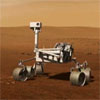
|
 |
OTHER HEADLINES Additional stories today
|
 |
Astronomers crack lunar mystery with ancient rock -- The collection of rocks that the Apollo astronauts brought back from the moon carried with it a riddle that has puzzled scientists since the early 1970s: What produced the magnetization found in many of those rocks?

IBEX mapping Solar System's unseen boundary -- Following two months of commissioning, during which the spacecraft and sensors were tuned for optimum mission performance, the Interstellar Boundary Explorer (IBEX) spacecraft began gathering data to build the first maps of the edge of the heliosphere, the region of space influenced by the Sun.
|
 |
Space shuttle astronauts continue Cape training
While the Inauguration festivities were underway in Washington on Tuesday, a countdown dress rehearsal and emergency training drills continued at Kennedy Space Center to prepare for shuttle Discovery's upcoming launch carrying the final space station power truss segment.
 MISSION STATUS CENTER MISSION STATUS CENTER
 |  |

|
 |
Delta 4-Heavy rocket launches secret satellite
America's heavy-lift rocket, the white and orange triple-barreled booster towering 23 stories tall, launched a new intelligence-gathering satellite for the nation Saturday.
 PAYLOAD STORY PAYLOAD STORY
 MISSION STATUS CENTER - live updates! MISSION STATUS CENTER - live updates!
 IMAGES: LAUNCH PHOTO GALLERY IMAGES: LAUNCH PHOTO GALLERY
 IMAGES: ROCKET PHOTOS FROM SATURDAY IMAGES: ROCKET PHOTOS FROM SATURDAY
 IMAGES: MORE MORNING PAD SHOTS IMAGES: MORE MORNING PAD SHOTS
 IMAGES: AERIAL LAUNCH PAD PHOTOS IMAGES: AERIAL LAUNCH PAD PHOTOS
 VIDEO: PREVIOUS DELTA 4-HEAVY COVERAGE VIDEO: PREVIOUS DELTA 4-HEAVY COVERAGE
 OUR DELTA ROCKET ARCHIVE OUR DELTA ROCKET ARCHIVE
 |  |

|
 |

Additional coverage for subscribers:
 VIDEO:
FULL LAUNCH EXPERIENCE PLAY VIDEO:
FULL LAUNCH EXPERIENCE PLAY
 VIDEO:
LAUNCH PAD CAMERA NO. 1 PLAY VIDEO:
LAUNCH PAD CAMERA NO. 1 PLAY
 VIDEO:
LAUNCH PAD CAMERA NO. 2 PLAY VIDEO:
LAUNCH PAD CAMERA NO. 2 PLAY
 VIDEO:
THE DELTA 4-HEAVY ROCKET LIFTS OFF PLAY VIDEO:
THE DELTA 4-HEAVY ROCKET LIFTS OFF PLAY
 VIDEO:
LAUNCH AS SEEN FROM PRESS VIEWING SITE PLAY | HI-DEF VIDEO:
LAUNCH AS SEEN FROM PRESS VIEWING SITE PLAY | HI-DEF
 VIDEO:
TIME-LAPSE MOVIE OF THE GANTRY RETRACTING PLAY | HI-DEF VIDEO:
TIME-LAPSE MOVIE OF THE GANTRY RETRACTING PLAY | HI-DEF
 VIDEO:
LAUNCH PAD'S MOBILE GANTRY ROLLED BACK PLAY | HI-DEF VIDEO:
LAUNCH PAD'S MOBILE GANTRY ROLLED BACK PLAY | HI-DEF
 MORE:
PREVIOUS DELTA 4-HEAVY COVERAGE MORE:
PREVIOUS DELTA 4-HEAVY COVERAGE
 SUBSCRIBE NOW SUBSCRIBE NOW

|
Shuttle crew flies to Florida for practice countdown
The Discovery astronauts flew to the Kennedy Space Center Monday to review emergency procedures and participate in a practice countdown Wednesday, a major milestone on the road to launch Feb. 12 on a space station assembly mission.
 FULL STORY FULL STORY
 |  |

|
 |

Additional coverage for subscribers:
 VIDEO:
INFORMAL NEWS CONFERENCE AT RUNWAY PLAY VIDEO:
INFORMAL NEWS CONFERENCE AT RUNWAY PLAY
 VIDEO:
ASTRONAUTS ARRIVE FOR PRACTICE COUNTDOWN PLAY VIDEO:
ASTRONAUTS ARRIVE FOR PRACTICE COUNTDOWN PLAY
 MORE:
STS-119 VIDEO COVERAGE MORE:
STS-119 VIDEO COVERAGE
 SUBSCRIBE NOW SUBSCRIBE NOW

|
Experimental TacSat craft struggling to reach space
The Pentagon's ambition to develop inexpensive and responsive satellites, a program already riddled with setbacks, is facing a new delay due to a technical problem with a grounded satellite.
 FULL STORY FULL STORY
 |  |
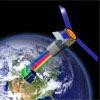
|
 |
Mars strategy shift eyed as methane boosts odds for life
The Mars Science Laboratory rover may be retargeted to land near a methane vent on Mars to specifically seek direct evidence of current Martian life.
 FULL STORY FULL STORY
 |  |
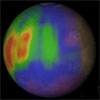
|
 |
Secret inspection satellites boost space intelligence ops
In a top secret operation, the U.S. Defense Dept. is conducting the first deep space inspection of a crippled U.S. military spacecraft. To do this, it is using sensors on two covert inspection satellites that have been prowling geosynchronous orbit for nearly three years.
 FULL STORY FULL STORY
 |  |
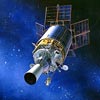
|
 |
Craig Covault joins Spaceflight Now
Craig Covault, one of the world's most respected aerospace journalists, is joining the Spaceflight Now team as Editor-at-Large. With about 3,000 articles to his name and nearly four decades in the business, Craig will further strengthen Spaceflight Now's unrivaled coverage of the space program.
 FULL STORY FULL STORY
 |  |

|
 |
Discovery completes morning trip to launch pad
Poised to fly the 125th mission of the space shuttle program, Discovery made its journey from the Vehicle Assembly Building to launch pad 39A at Kennedy Space Center.
 MISSION STATUS CENTER MISSION STATUS CENTER
 LAUNCH WINDOWS CHART LAUNCH WINDOWS CHART
 STS-119 FLIGHT PLAN STS-119 FLIGHT PLAN
 VIDEO: MISSION VIDEO COVERAGE VIDEO: MISSION VIDEO COVERAGE
 |  |

|
 |

Additional coverage for subscribers:
 VIDEO:
DISCOVERY POSITIONED ATOP PAD 39A PLAY | HI-DEF VIDEO:
DISCOVERY POSITIONED ATOP PAD 39A PLAY | HI-DEF
 VIDEO:
EARLY MORNING ROLLOUT FROM THE VAB PLAY | HI-DEF VIDEO:
EARLY MORNING ROLLOUT FROM THE VAB PLAY | HI-DEF
 VIDEO:
TIME-LAPSE MOVIE OF DISCOVERY ARRIVING AT PAD 39A PLAY VIDEO:
TIME-LAPSE MOVIE OF DISCOVERY ARRIVING AT PAD 39A PLAY
 SUBSCRIBE NOW SUBSCRIBE NOW

|
SpaceX Falcon 9 rocket tests its Cape Canaveral pad
Engineers removed the first Falcon 9 rocket from its launch pad Monday, concluding the first round of pathfinder tests for the launcher and ground systems at the oceanfront complex.
 FULL STORY FULL STORY
 |  |
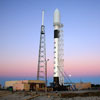
|
 |
Space station construction mission preview movies
All day Friday at the Johnson Space Center, NASA officials and the astronauts themselves offered detailed previews of next month's shuttle mission to deliver and activate the international space station's final power truss.
 |  |

|
 |

Additional coverage for subscribers:
 VIDEO:
SHUTTLE AND STATION PROGRAM UPDATE PLAY VIDEO:
SHUTTLE AND STATION PROGRAM UPDATE PLAY
 VIDEO:
STS-119 MISSION OVERVIEW BRIEFING PLAY VIDEO:
STS-119 MISSION OVERVIEW BRIEFING PLAY
 VIDEO:
PREVIEW BRIEFING ON MISSION'S SPACEWALKS PLAY VIDEO:
PREVIEW BRIEFING ON MISSION'S SPACEWALKS PLAY
 VIDEO:
THE ASTRONAUTS' PRE-FLIGHT NEWS BRIEFING PLAY VIDEO:
THE ASTRONAUTS' PRE-FLIGHT NEWS BRIEFING PLAY
 MORE:
STS-119 VIDEO COVERAGE MORE:
STS-119 VIDEO COVERAGE
 SUBSCRIBE NOW SUBSCRIBE NOW

|
Winds make rocks walk
Rocks on Mars are on the move, rolling into the wind and forming organized patterns, according to new research. The new finding counters the previous explanation of the evenly spaced arrangement of small rocks on Mars. That explanation suggested the rocks were picked up and carried downwind by extreme high-speed winds thought to occur on Mars in the past.
 FULL STORY FULL STORY
 |  |
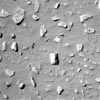
|
 |
Balloon mission tunes in to a cosmic radio mystery
According to scientists presenting their work at the American Astronomical Society meeting this week, cosmic radio noise booms six times louder than expected, potentially drowning out the sounds of the early Universe.
 FULL STORY FULL STORY
 |  |

|
 |
Shuttle Discovery joins its fuel tank and boosters
After Discovery rode into the Vehicle Assembly Building on Wednesday afternoon, ground crews quickly got to work lifting the spaceplane vertically and positioned for attachment to the external fuel tank.
 MISSION STATUS CENTER - live updates! MISSION STATUS CENTER - live updates!
 LAUNCH WINDOWS CHART LAUNCH WINDOWS CHART
 STS-119 FLIGHT PLAN STS-119 FLIGHT PLAN
 |  |

|
 |

Additional coverage for subscribers:
 VIDEO:
DISCOVERY HOISTED FOR ATTACHMENT TO TANK PLAY | HI-DEF VIDEO:
DISCOVERY HOISTED FOR ATTACHMENT TO TANK PLAY | HI-DEF
 VIDEO:
CRANE ROTATES DISCOVERY VERTICALLY PLAY | HI-DEF VIDEO:
CRANE ROTATES DISCOVERY VERTICALLY PLAY | HI-DEF
 VIDEO:
DISCOVERY MOVES TO ASSEMBLY BUILDING PLAY | HI-DEF VIDEO:
DISCOVERY MOVES TO ASSEMBLY BUILDING PLAY | HI-DEF
 VIDEO:
NOSE WHEEL LANDING GEAR RETRACTED PLAY | HI-DEF VIDEO:
NOSE WHEEL LANDING GEAR RETRACTED PLAY | HI-DEF
 SUBSCRIBE NOW SUBSCRIBE NOW

|
Space shuttle Discovery moves closer to next launch
The first visible sign that a shuttle launch is nearing occurs when the orbiter moves from its hangar to the Vehicle Assembly Building for attachment to the external fuel tank and twin solid rockets. Shuttle Discovery made that trip Wednesday in preparation for its mid-February blastoff.
 MISSION STATUS CENTER MISSION STATUS CENTER
 PHOTO GALLERY: DISCOVERY MOVES TO VAB PHOTO GALLERY: DISCOVERY MOVES TO VAB
 |  |
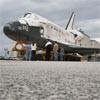
|
 |

Additional coverage for subscribers:
 VIDEO:
TIME-LAPSE MOVIE OF DISCOVERY GOING VERTICAL PLAY VIDEO:
TIME-LAPSE MOVIE OF DISCOVERY GOING VERTICAL PLAY
 VIDEO:
TIME-LAPSE MOVIE OF ASSEMBLY BUILDING CRANE WORK PLAY VIDEO:
TIME-LAPSE MOVIE OF ASSEMBLY BUILDING CRANE WORK PLAY
 VIDEO:
TIME-LAPSE MOVIE OF DISCOVERY'S TRIP TO VAB PLAY VIDEO:
TIME-LAPSE MOVIE OF DISCOVERY'S TRIP TO VAB PLAY
 VIDEO:
TIME-LAPSE MOVIE OF PAYLOAD'S MOVE PLAY VIDEO:
TIME-LAPSE MOVIE OF PAYLOAD'S MOVE PLAY
 SUBSCRIBE NOW SUBSCRIBE NOW

|
Hubble Space Telescope finds stars that 'go ballistic'
Even some stars go ballistic, racing through interstellar space like bullets and tearing through clouds of gas. Images from NASA's Hubble Space Telescope reveal 14 young, runaway stars plowing through regions of dense interstellar gas, creating brilliant arrowhead structures and trailing tails of glowing gas.
 FULL STORY FULL STORY
 |  |

|
 |
OTHER HEADLINES Additional stories today
|
 |
Half-baked asteroids have Earth-like crust -- Asteroids are hunks of rock that orbit in the outer reaches of space, and scientists have generally assumed that their small size limited the types of rock that could form in their crusts. But two newly discovered meteorites may rewrite the book on how some asteroids form and evolve.

Black holes lead galaxy growth, new research shows -- Astronomers may have solved a cosmic chicken-and-egg problem -- the question of which formed first in the early Universe -- galaxies or the supermassive black holes seen at their cores.
|
 |
Brown dwarfs don't hang out with stars
According to the results of a Hubble Space Telescope survey, brown dwarfs and normal stars don't like to hang out together.
 FULL STORY FULL STORY
 |  |

|
 |
OTHER HEADLINES Additional stories today
|
 |
Fermi telescope unveils a dozen new pulsars -- NASA's Fermi Gamma-ray Space Telescope has discovered 12 new gamma-ray-only pulsars and has detected gamma-ray pulses from 18 others. The finds are transforming our understanding of how these stellar cinders work.

Gamma-ray burst offers first peek at a star factory -- Astronomers combining data from NASA's Swift satellite, the W. M. Keck Observatory in Hawaii, and other facilities have, for the first time, identified gas molecules in the host galaxy of a gamma-ray burst.

Swift shows active galaxies are different near and far -- An ongoing X-ray survey undertaken by NASA's Swift spacecraft is revealing differences between nearby active galaxies and those located about halfway across the universe. Understanding these differences will help clarify the relationship between a galaxy and its central black hole.
|
 |
Hubble and Spitzer show Milky Way in amazing detail
This must-see composite color infrared image from the Hubble and Spitzer spacecraft shows the center of our Milky Way galaxy. It reveals a new population of massive stars and new details in complex structures in the hot ionized gas swirling around. The sweeping panorama is the sharpest infrared picture ever made of the Galactic core.
 FULL STORY FULL STORY
 |  |
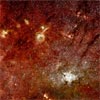
|
 |
OTHER HEADLINES Additional stories today
|
 |
Dead stars are telling the story of planetary birth -- Astronomers have turned to an unexpected place to study the evolution of planets -- dead stars. Observations made with NASA's Spitzer Space Telescope reveal six dead "white dwarf" stars littered with the remains of shredded asteroids. This might sound pretty bleak, but it turns out the chewed-up asteroids are teaching astronomers about the building materials of planets around other stars.

New study reveals hazards of severe space weather -- A NASA-funded study describes how extreme solar eruptions could have severe consequences for communications, power grids and other technology on Earth.
|
 |
Stars forming just beyond black hole's grasp
The center of the Milky Way presents astronomers with a paradox: it holds young stars, but no one is sure how those stars got there. The galactic center is wracked with powerful gravitational tides stirred by a 4 million solar-mass black hole. Those tides should rip apart molecular clouds that act as stellar nurseries, preventing stars from forming in place.
 FULL STORY FULL STORY
 |  |
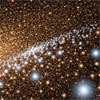
|
 |
OTHER HEADLINES Additional stories today
|
 |
New info says Milky Way a swifter spinner, more massive -- Fasten your seat belts -- we're faster, heavier, and more likely to collide than we thought. Astronomers making high-precision measurements of the Milky Way say our home Galaxy is rotating about 100,000 miles per hour faster than previously understood.

Baby Jupiters must gain weight fast -- The planet Jupiter gained weight in a hurry during its infancy. It had to, since the material from which it formed probably disappeared in just a few million years, according to a new study of planet formation around young stars.
|
 |
Space has never been closer
Observations made by NASA instruments onboard an Air Force satellite have shown that the boundary between the Earth's upper atmosphere and space has moved to extraordinarily low altitudes.
 FULL STORY FULL STORY
 |  |

|
 |
Mars rovers celebrate fifth year of exploration
NASA's Spirit and Opportunity rovers celebrate their fifth year exploring the Red Planet this month, in a mission that was only expected to last 90 days.
 FULL STORY FULL STORY
 ARCHIVE: COVERAGE OF SPIRIT'S LANDING ARCHIVE: COVERAGE OF SPIRIT'S LANDING
 ARCHIVE: COVERAGE OF OPPORTUNITY'S LANDING ARCHIVE: COVERAGE OF OPPORTUNITY'S LANDING
 |  |

|
 |
Did prehistoric asteroid smash stimulate life?
Microscopic meteorite fragments discovered in Scotland that fell 480 million years ago coincided with a time of dramatic upheaval on Earth.
 FULL STORY FULL STORY
 |  |

|
 |
Researchers ponder what came before the Big Bang
The Big Bang is widely considered to have obliterated any trace of what came before. Now, astrophysicists at Caltech think that their new theoretical interpretation of an imprint from the earliest stages of the Universe may also shed light on what came before.
 FULL STORY FULL STORY
 |  |

|
 |
OTHER HEADLINES Additional stories today
|
 |
The great escape of water from Venus -- Venus Express has provided new clues that suggest how the planet lost its water, which could have once been as abundant as it is on Earth today.

Dark energy's galactic stranglehold seen -- It dominates the Universe, accounting for 74 percent of its energy density. The mysterious, space-stretching force known as dark energy, which is accelerating the expansion of the Universe, could also be inhibiting the development of galaxies.
|
 |
A solar flare surprise
Solar flares are the most powerful explosions in the solar system. Packing a punch equal to a hundred million hydrogen bombs, they obliterate everything in their immediate vicinity. Not a single atom should remain intact. At least that's how it's supposed to work.
 FULL STORY FULL STORY
 |  |

|
 |
|
Read our earlier news archive page.
|



